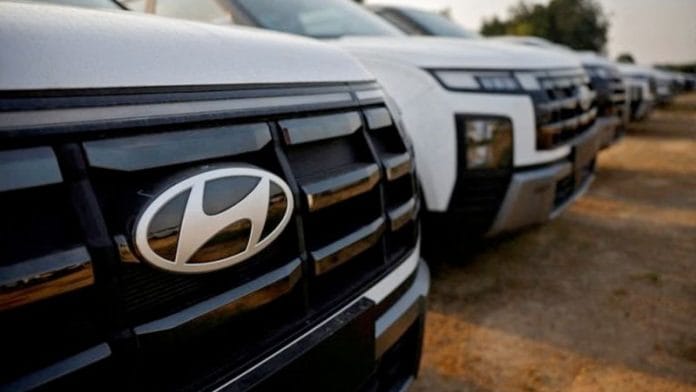Sales of passenger cars in India have hit a slow lane. While new products are in demand — Kia announced that the new 2025 Syros SUV has garnered over 20,000 bookings — older products are seeing sales stall. So much so that Maruti-Suzuki plans to withdraw the Ciaz sedan from sales in a couple of months.
The numbers bear this out. Domestic sales of passenger vehicles for the first 10 months of the financial year — 1 April 2024 to 31 January 2025 — grew only 2 per cent to 3.49 million units, according to sales and production data released by the Society of Indian Automobile Manufacturers (SIAM).
These are wholesale numbers, and despite retail sales improving 15 per cent in January 2025 compared to January 2024, according to the Federation of Automotive Dealer Associations (FADA), inventory levels remained high, with 50–55 days of stock. On automotive forums and websites, news of deep discounts for some models is widespread.
It’s not all doom and gloom
There has been one bright spot for the Indian automotive industry this year — exports. They have grown 14.4 per cent in the last 10 months compared to the same period last year. Unlike domestic sales, which can gather dust in dealer yards, cars loaded onto giant carrier ships are as good as sold, often fetching higher profit margins than domestic sales. Between April to January this year, 6,35,673 passenger vehicles have been exported, and the industry expects to touch 7,50,000 units by the end of the fiscal year.
A few days ago, Honda announced that its Elevate SUV, launched 18 months ago, hit 1,00,000 unit sales — but 47 per cent of those were exports. In fact, Honda sells the ‘Made in India’ Elevate as the WR-V in Japan. Maruti-Suzuki also exports the Fronx crossover to Japan and recently began shipping the five-door Jimny to its home market. The latter, manufactured solely in Maruti’s Gurugram factory, has become such a hit in Japan that there’s a waiting list — quite a contrast to India, where Maruti-Suzuki had to slash prices on the off-roader to clear stock.
Then there’s Nissan, which sells only a couple of thousand cars in India each month, totalling just 23,069 units in the past 10 months. Yet, the embattled Japanese manufacturer has exported 56,374 units in the same period, making it India’s third-largest vehicle exporter behind Maruti-Suzuki and Hyundai.
Hyundai, meanwhile, recently celebrated 25 years of exports from its Tamil Nadu factory in Sriperumbudur, having shipped 3.7 million vehicles to over 150 countries. The most popular models are the i10, with over 1.5 million exports, and the Verna sedan, with over half a million units on roads worldwide. On a visit to Hyundai’s factory a few years ago, I saw vehicles bound for Caribbean islands and North Africa.
“We are positioning HMIL as a production hub for emerging markets. We have a very healthy and balanced mix of domestic and export volume, which not only boosts profits but also provides a natural hedge against market fluctuations,” Unsoo Kim, managing director of Hyundai Motor India Limited, told me. “We saw export growth in almost all regions in the first half of FY 2025 compared to the second half of FY 2024, especially in Africa, Mexico, and Latin America.”
“However, the Middle East continued to face headwinds due to the Red Sea crisis. We are closely monitoring the situation and plan to mitigate the risk by focusing on other regions,” Kim added.
Also read: Is Tesla late to the party? EV space in India is as busy as Elon Musk
India’s manufacturing success
The automotive industry is one of India’s manufacturing successes — and an example of how tariff barriers can protect and grow domestic production. With a large home market, Indian manufacturers have reached significant scale, fostering a robust domestic components industry.
But doesn’t the transition from internal combustion engines to electric vehicles (EVs) pose a challenge for the industry? Conversations with executives suggest otherwise. Toshihiro Suzuki, CEO of Suzuki Motor Corporation, made it clear during his visit to India last month that the future will see multiple technologies and fuels, including Compressed BioGas and Hydrogen. While studies indicate EVs will account for 15 per cent of the passenger vehicle market by 2030, internal combustion engine (ICE) vehicles will still have a place.
The same issues slowing EV adoption in India — high ownership costs and inadequate charging infrastructure — are even more pronounced in many other countries. Consumers’ distrust of grid electricity, shaped by years of power outages and load-shedding, remains a barrier to EV adoption in India and elsewhere. As a result, demand for Indian-made ICE vehicles is expected to stay strong for decades.
Still, the risk of throttling the golden goose is still high. Industrial unrest, especially in Tamil Nadu, isn’t helping. And despite the rapid buildout of expressways and dedicated freight corridors, shipping continues to be a problem. Some in the automobile industry have implored the government to build India’s own car carrier vessels.
Whether Indian car exports grew through meticulous policy planning or happy circumstances, almost everybody agrees that now that success has arrived, it must be protected at all costs — especially in these turbulent times of global trade.
@kushanmitra is an automotive journalist based in New Delhi. Views are personal.
(Edited by Ratan Priya)






